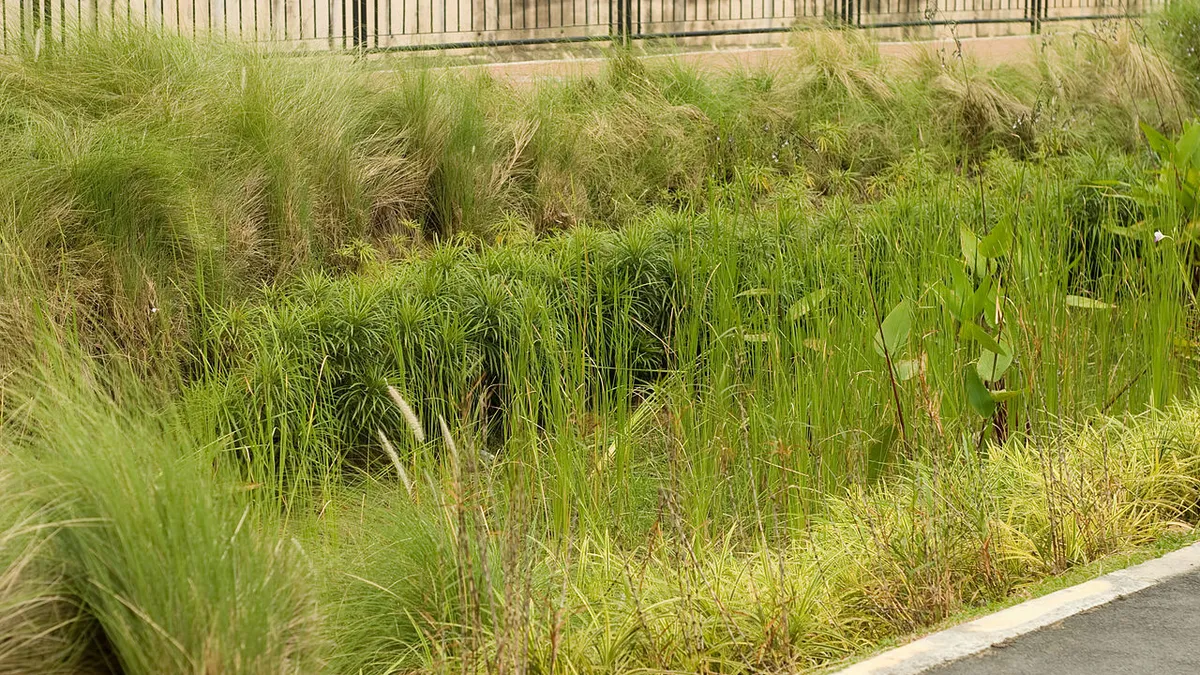Dive Brief:
- The city of New Orleans has not included new rain and stormwater management methods as part of a $2 billion post-Hurricane Katrina infrastructure repair program, The Louisiana Weekly reported, despite a federally-funded urban water plan that lays out the city's flooding and other water issues and offers up new design solutions to address them.
- Instead of incorporating features like pervious or porous pavement, rain gardens, bioswales and other eco-conscious water management features, the city is mostly replacing streets, sidewalks and other infrastructure with the same pre-Katrina systems that have strained the city's pumping capacity before, during and after the hurricane. The strategies outlined in the Greater New Orleans Urban Water Plan, an undertaking led by Waggoner and Ball Architects, would also help to preserve the city's new sidewalks and streets, which routinely sustain damage from standing water.
- Ramsey Green, New Orleans' deputy chief administrative officer for infrastructure, said the $2 billion Federal Emergency Management Agency grant comes with a very specific scope of work attached, one that has taken years to develop and finalize. This, Green said, gives the city very little leeway on how to spend the money and excludes most of the green infrastructure projects for which some are calling. Changes to the scope of work are not impossible, but Green said the process would further delay repairs. However, post-Superstorm Sandy legislation could allow the city more discretion on how to use the FEMA funds.
Dive Insight:
New Orleans officials said they don't want to delay the repair projects already underway, but the city has a hand in any interruptions to the schedule. As of the end of May, the city had spent only 1% of the FEMA money it received in 2016 and only 20% of the projects in the repair scope of work had broken ground. Sixty post-Katrina projects were supposed to be in progress, but only 12 have been given a notice to proceed. However, Mayor LaToya Cantrell's administration has given the go-ahead to $20 million of street work and $28 million of stormwater projects.
The FEMA review process could hold up progress even longer since the agency is taking another look at its settlement with New Orleans to determine if any of the repair money is going toward streets that were already in poor condition before Katrina made landfall 13 years ago in 2005.
FEMA may have imposed restrictions on whether part of its grant can be used for green infrastructure, but cities around the country are not only encouraging developers and building owners to build stormwater management features like green roofs but are paying them to do so. For example, the city of Philadelphia offers grants and credits that could pay for up to 100% of nonresidential stormwater retrofits. Acceptable projects include green roofs, bioswales, cisterns, tree trenches and porous pavers.











